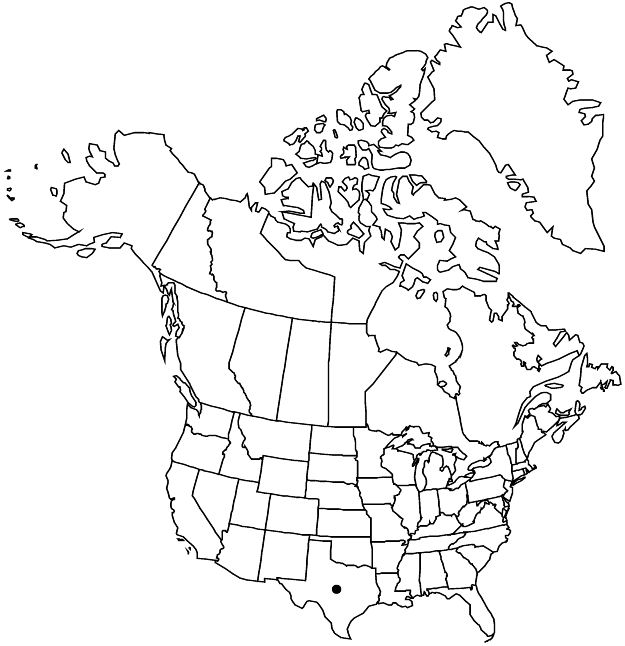familyMalvaceae
subfamilyMalvaceae subfam. Malvoideae
genusKrapovickasia
speciesKrapovickasia physaloides
Krapovickasia physaloides
Brittonia 30: 457. 1978.
Selected by author to be illustratedIntroduced
Basionym: Sida physaloides C. Presl Reliq. Haenk. 2: 105. 1835
Synonyms: S. standleyi Clement
Treatment appears in FNA Volume 6. Treatment on page 275.
Revision as of 20:15, 24 September 2019 by FNA>Volume Importer
Stems with simple hairs 1–1.5 mm and smaller, stellate hairs. Leaves: stipules 4–5 mm; petiole 1/4–1/2 as long as blade; blade discolorous, 2.5–4.5 cm, apex obtuse or subacute. Pedicels slender, 0.5–1.5 cm. Flowers: calyx 7–8(–12) mm; petals subequal to calyx; staminal column glabrous, anthers 10. Schizocarps blackish; mericarps blackish, 2.5–3 mm, relatively fragile and unornamented. 2n = 16.
Phenology: Flowering spring–summer.
Habitat: Oak woodlands, grassy sites
Elevation: 100 m
Distribution

Tex., Mexico (Nuevo León, San Luis Potosí, Tamaulipas).
Discussion
Krapovickasia physaloides is known in the flora area from Karnes and San Saba counties, where it is currently thought to have been introduced.
Selected References
None.
Lower Taxa
None.
